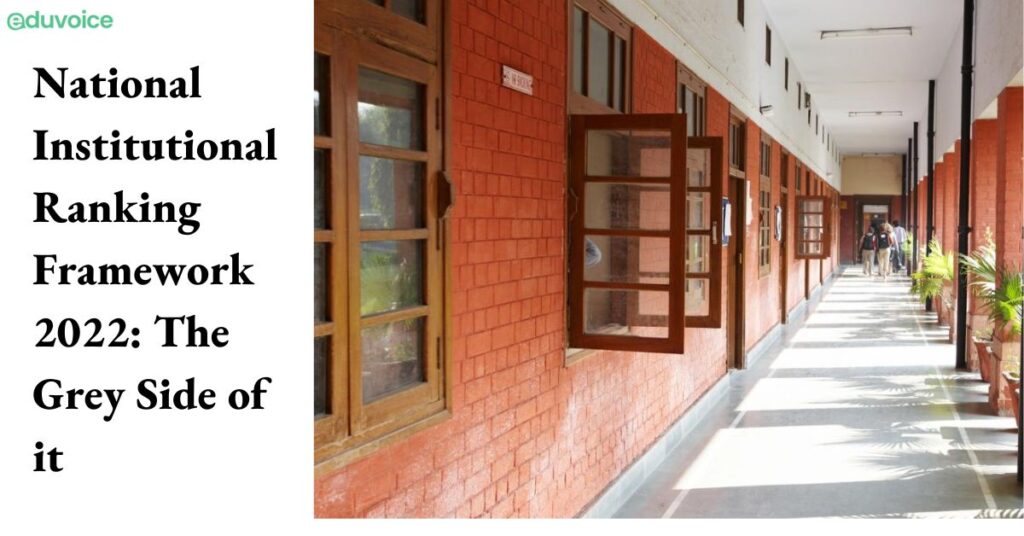The Indian subcontinent lags on the indicator of educational attainment and literacy both in terms of quality and quantity, even after almost 75 years of independence. The institutions that have in recent years outperformed others to reserve places in national and international ranks are a handful. National Institutional Ranking Framework
Only three universities in India could shine in the recent QS World Rankings, 2022 published by global higher education think-tank QS Quacquarelli Symonds. Several news and broadcast agencies focus on only three globally recognised institutes in the country: Tata Institute of Fundamental Research, Mumbai, Indian Institute of Technology, Bombay, and the Indian Institute of Science, Bangalore.
At the national level, the Union education ministry publishes the National Institutional Ranking Framework (NIRF). The 2022 edition was released on July 25.
This framework ranks 100 institutions under different categories over a comprehensive list of parameters divided into:
- Teaching
- Learning and Resources
- Research and Professional Practice
- Graduation Outcomes
- Outreach and Inclusivity
- Peer Perception
While the institutes ranked well in this framework are loaded extensively (which they rightfully deserve), this framework presents a reality that the Indian academic mass might hesitate to accept.
In the upcoming paragraphs, we discuss the issue of underrepresentation, lack of effective monitoring of educational outcomes, and most importantly unequal availability of opportunity for quality higher education in India.
Exclusive representation
An analysis of the inclusivity of the framework can be done based on its representativeness in quantity and quality terms.
In quantity terms, contrasting the number of participating institutions with that of the existing number of institutions presents a worrying figure. There are 1,043 universities, 42,343 colleges, and 11,779 stand-alone institutions, according to India Survey on Higher Education web portal.
In National Institutional Ranking Framework 2022 ranking for colleges, however, only 2,270 entries were made. This roughly accounts for 5 percent of the total colleges in India.
Similar is the case for NIRF 2022 ranking in the “overall” category: 1,875 entries are made, which accounts for 3 percent of all the institutions in India.
Considering this, the framework can be renamed as Nationally Leading Institutional Framework, instead of National Institutional Ranking Framework, because it doesn’t serve the purpose to demonstrate the competitiveness of less than 5 percent of institutions in front of the 95 percent who weren’t considered.
Flawed framework of assessment
The national metric presented by the different parameters of the NIRF is flawed in itself. The assessment of institutions here suffers from the same criticism as Indian education.
It can be understood from this celebrated line by Albert Einstein: Everybody is a genius. But if you judge a fish by its ability to climb a tree, it will spend its whole life believing that it is stupid.
NIRF ranks institutes in different categories to take into account the heterogeneity across disciplines. But it is also important to ensure equity in the assessment rather than just equality.
In simpler terms, a mediocre college in the rural areas of India might have outperformed the top-ranked institutions in a framework that assesses the expected outcomes based on the resources, infrastructure, and exposure available to it.
Huge performance gap
Within the framework representation, there exists a huge performance gap.
The figure represents the fall in aggregate scores in the NIRF Score for the Overall category as rank increases. It is visible that the score has remained over 60 up to rank 20, while there is a sharp reduction in the performance in the subsequent ranks till 100.
Another interesting observation here is that of the gap in performance of a few over most. The institutes in the form of dots are more scattered at the highest score segment (meaning a very few institutes have performed exceptionally); white dots are more concentrated towards the later ranks meaning that lower performing institutes are incomparably more here. This significant difference creates serious policy questions of inequality in the performance of institutes.
The same has been established by the above figure. It represents the gap between the average performance of rank deciles (the first 10 ranks are clustered as 1st decile and others clustered accordingly). The sharp decline in average score between first and second rank decile indicates the huge gap in performance by a few institutions.
The report also highlighted that not only academic excellence (indicated by NIRF score) is concentrated in a few institutions, but also in a few states and cities.
The major disadvantage of this unequal spread of quality academic opportunities also creates huge inequality in quality educational attainment and equity in rendering higher education services.
The most important question that arises is: Who is the target audience of these frameworks? Is the government listening to them in coming up with solutions that can bring most (if not all) higher education institutions on the same page?
Undoubtedly, it is a matter of celebration for the institutions leading the ranks, but the precarity of the scenario that this NIRF presents also needs immediate consideration and effective action.
For More Such Articles, News Update, Events, and Many More Click Here






